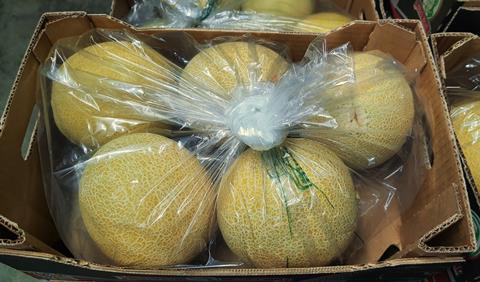Research from Wageningen University shows packaging company’s modified atmosphere offerings reduce food waste and its associated greenhouse gasses

StePac’s modified atmosphere packaging (MAP) has been shown to reduce food waste and the subsequent greenhouse gas (GHG) emissions in new research commissioned by the fresh produce packaging company.
Researchers at Wageningen Food & Biobased Research facility, Netherlands, were commissioned to quantify the GHG emissions associated with the use of StePac’s MAP products across numerous supply chains worldwide.
Gary Ward, business development manager for StePac, said the results exceed expectations and showed MAP products had shown the ability to dramatically reduce CO2 emissions.
“Food waste contributes circa 8 per cent of all GHG emissions associated with climate change, the biggest threat to our planet,” said Ward.
“By creating sustainable modified atmosphere packaging solutions which extend produce freshness often by 50-100 per cent, StePac has demonstrated through this research, that it helps lower GHG emissions by reducing waste in the fresh produce supply chain and often facilitating sea transport instead of air transport of produce to distant destinations. The reduction in GHG emissions far exceeds those generated in the full lifecycle of the packaging itself.”
Jan Broeze, senior scientist of sustainable food chains at the Wageningen Food & Biobased Research, developed a “field to fork” calculator to estimate greenhouse emissions associated with different aspects of fresh produce production and shipping.
Calculations took into consideration the GHG emissions associated with the different plastic packaging solutions throughout the lifecycle including the end-of-life (incineration, landfill and recycling).
It also included data provided by StePac pertaining to waste reduction based on research and commercial experience. Nine scenarios were examined, including melons from Honduras to the UK (Xtend Bulk), blueberries from Peru to China (Xflow), stonefruit from Spain to Brazil (Xtend Bulk), and broccoli shipped domestically in Brazil (Xgo Retail).
The results showed that GHG emissions related to plastics production, use and end-of-life are relatively small compared to other GHG emissions along the food supply chain. For example, in the shipping of melons from Honduras to UK, the cultivation, harvest, and post-harvest handling represented 41 per cent of the total GHG emissions of 701kg CO2/tonne of melons.
Transportation represented 48 per cent of the GHG emissions. Meanwhile, Xtend packaging represented only 3 per cent of the total CO2 emissions and the end-of-life represented only 1 per cent of the total CO2 emissions yet contributed significantly to reducing CO2 emissions by minimising waste.
In one example, shipping unwrapped Galia and Cantaloupe melons from Honduras to the UK in 25+ days, resulted in a high waste of nearly 18 per cent. Ward said due to its low water-vapor transmission rate (WVTR), polyethylene packaging with MAP properties is unsuitable and can result in waste levels of 12.5 per cent or greater, mainly due to microbial decay.
Ward said the use of Xtend packaging with relatively high WVTR levels that eliminate excess moisture plays a key role in reducing the waste in seafreight to a minimum of less than 3.5 per cent. This reduction in waste, when compared to polyethylene packaging, represents a reduction in 6 per cent of the GHG emissions.



